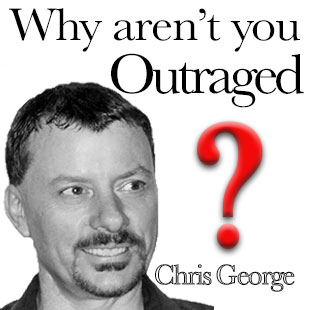
(CHRIS GEORGE / iNFOnews.ca)
March 06, 2018 - 12:16 PM
Last week the Washington State Senate banned "non-native marine finfish aquaculture", a fancy way of saying no more Atlantic salmon in open water net pens.
The British Columbia government needs to follow their lead and move the salmon feedlots out of the inside passage, preferably onto land in closed containment facilities.
I happen to live across Shuswap Lake from the Adams River, home of the world-famous sockeye run. People come out every fall from everywhere to see the fish. The days of fish beyond counting are long gone now, but the reputation lives on and the people and the fish still come.
The threats to the salmon's numbers are legion. Some threats, like warm river water, are somewhat beyond our control. Some, like the destruction of foreshore habitat in our lakes, are not.
Discussing wild salmon is difficult. At every turn, humans are impacting the salmon's ability to be on the planet by encroaching into and often destroying their habitat. We justify this encroachment to ourselves in terms of economic development. As long as the value provided by the development outweighs the cost of lost fish, we're all good. We're even better if we can just go ahead without measuring the lost fish, pretending they don't exist.
Have you ever heard of the Moran Dam? It was proposed in the middle of the last century by an American company. The idea was to build a dam on the Fraser River, just north of Lillooet and sell the power to the population centres in the Pacific Northwest, including Vancouver. The proposal was vehemently opposed by the environmentalists of the day, so much so that we credit Roderick Haig-Brown with stopping the idea moving forward.
We even named the provincial park at the mouth of the Adams River after him, an honour he deserved for a lifetime of advocacy. Ultimately, though, it wasn't the environmental values that Haig-Brown was championing that won the day. It was the value of the Fraser River wild salmon fishery.
Accounting for it made the dam proposal unprofitable. Now we are in a situation where if the Moran Dam were to be proposed today, the Fraser River wild salmon fishery wouldn't even merit a discussion if the only value we were worried about was monetary. And a monetary argument can't be the only argument we use when discussing the wild salmon and the aquaculture industry.
If it is to be the only argument, then it is game over. Luckily for the salmon, we can use science to help us identify what those other arguments should be. The B.C. Salmon Farmers Association head says the Washington State decision was based on an emotional reaction to the collapse of a feedlot in state waters last summer. "It's a decision that wasn't based in science."
Washington state senators, in the first section of their bill, beg to differ.
"...just as evidence has emerged that non-native marine finfish aquaculture may endanger Washington's native salmon populations, so too has evidence emerged that marine finfish aquaculture, in general, may pose unacceptable risks not only to Washington's native salmon populations but also to the broader health of Washington's marine environment. Given this evidence, the legislature intends to phase out nonnative finfish aquaculture in Washington's marine waters."
Evidence. Sounds like part of the scientific method to me.
The game of scientific ping-pong between salmon activists, government scientists, politically motivated commissions and committees and the poor beleaguered companies who run the feedlots has been going on for decades. Lice, bacteria, viruses; some say they are affecting wild fish, some say that is nonsense and that the incidence of disease and parasites is similar in both populations.
What can be safely said is that until we sort out the science, we should be prudent. The wild salmon are suffering the death of a thousand drips. It won't be any one thing that does them in. Surely we can do what is easily within our grasp to help their situation. We can work on further restricting foreshore development. We can make sure we are paying attention to riparian setbacks and start looking for ways to maintain our roads that use less salt.
Who will pay the cost is a question I am often asked. I live in a wild salmon riding. Historically these fish have delivered billions of tons of nutrients to my neck of the woods. Eagle, bear and human; the resource has been well utilized and those nutrients spread throughout the watersheds these fish spend parts of their lives in. At what financial cost does the end of this ecosystem service come with? Can the health of the forest and the other creatures who live here be quantified by economics?
The government of the province of British Columbia needs to act. No harm in not renewing foreshore leases and providing opportunities for closed containment facilities on land, at the very least for those feedlots along the migration routes of juvenile wild salmon. This is something we can do. It won't require action on climate change. It won't require changing how we utilize the river system as a waste sink for industry. It won't require challenging developers of foreshore property. And it won't be the end of the aquaculture industry or the jobs it brings.
In the end, we must value the wild salmon in terms that cannot include economics alone. Economic value can be manipulated to meet whatever narrative is required to defend economic value. The continued existence of a species and the impact that species has on the web of life cannot, in reality, be measured in dollars and cents. Luckily, there are other values that matter.
— Chris George believes one measure of a just society is found in how well it balances fiscally conservative economics with social responsibility and environmental soundness in all of its living arrangements.
News from © iNFOnews, 2018